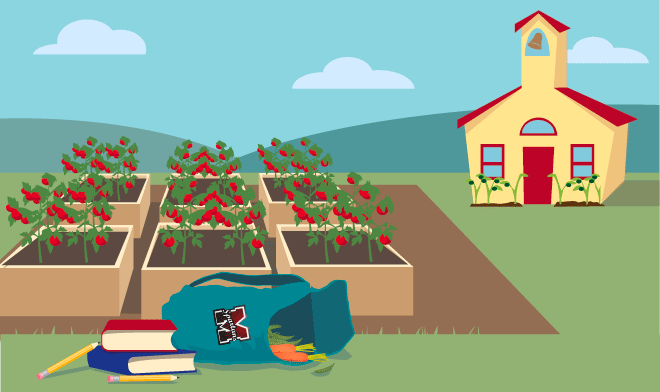Pizza, sloppy joes, hot dogs, and other processed foods are not on the menu at Monument Mountain Regional High School in Great Barrington, Massachusetts. Instead, the menu is loaded with fresh vegetables produced in the student-cultivated garden. The students involved in caring for the garden are not only providing healthier lunch options for their classmates, but also conserving energy.
Before the school garden was implemented, Monument Mountain Regional High School continued to serve pre-cut and pre-packaged apples, while fresh apples were harvested on a farm adjacent to the high school. This realization initiated the discussion of bringing local foods into the cafeteria. Zoe Borden, a student at Monument Mountain Regional High School, questioned, “Why not tap into our natural resources?” With the help of the student senate, Borden and her classmate Sophie Randolph implemented Project Sprout, and opted to bring in locally grown food. This was a difficult process that involved community and political involvement, but their hard work paid off and students are continuing to benefit from this active engagement with the society. The cafeteria is now serving produce grown right in the school’s backyard, such as apples, pears, berries, zucchini squash, yellow squash, tomatoes and onions; as well as local beef and pork.
In a video summarizing the student’s goals and achievements, the students noted that eating locally grown food could potentially have a beneficial impact on carbon footprints. Shipping food from various locations around the world creates large amounts of carbon dioxide, one of the main contributors to global warming according to the U.S. Environmental Protection Agency (EPA). Locally grown food may travel significantly less miles to get to the end destination, and emitting much less carbon. This group of students lowered their carbon footprint, as well as helped the local economy. Quinn, a high school student involved in Project Sprout states, “With the chance to grow my own fresh produce came the opportunity for me to feel closer with what I was shoveling into my mouth. Working in the garden made me realize that ‘eating local’ is more than just a sassy phrase that ends up on bumper stickers, but a reality that’s a few miles from my front door.”















